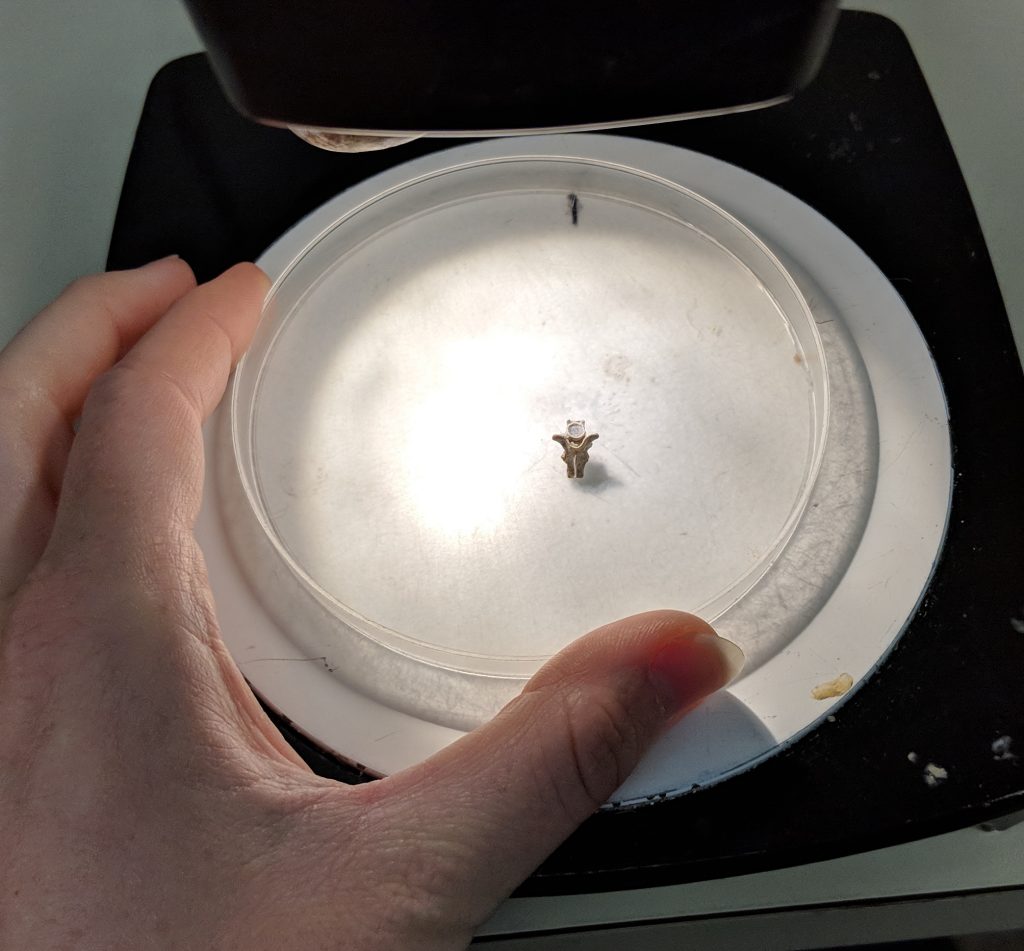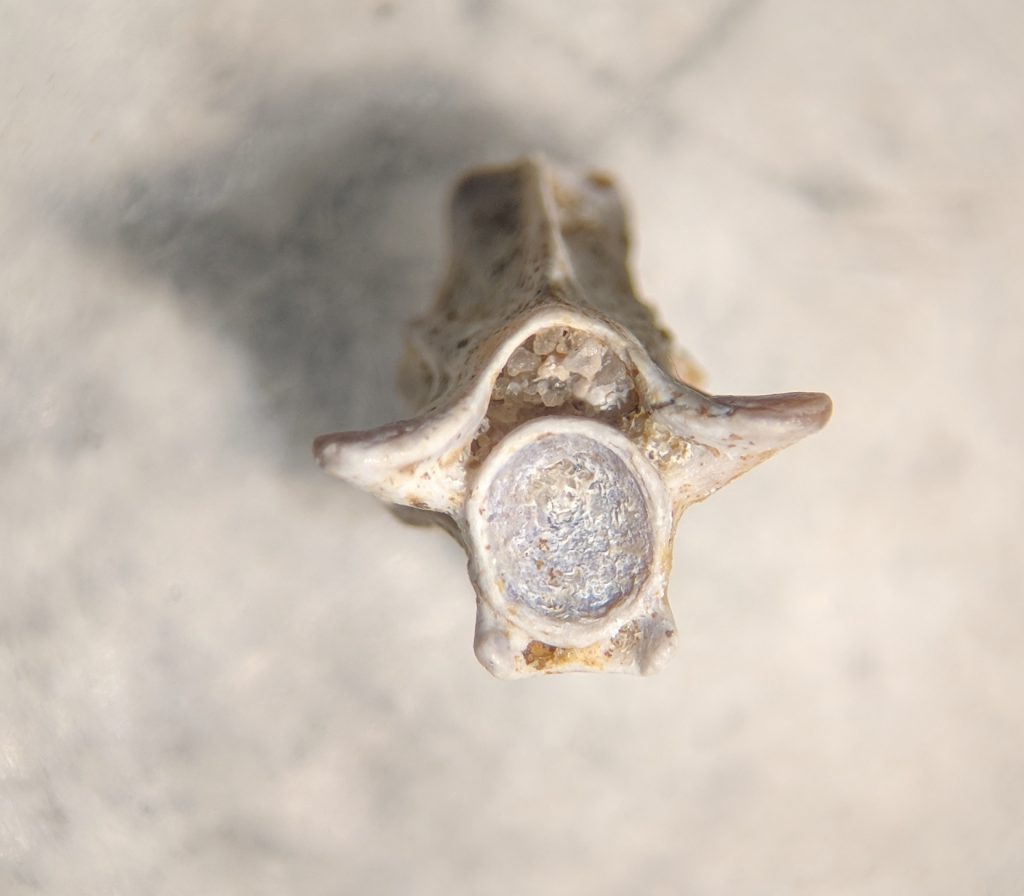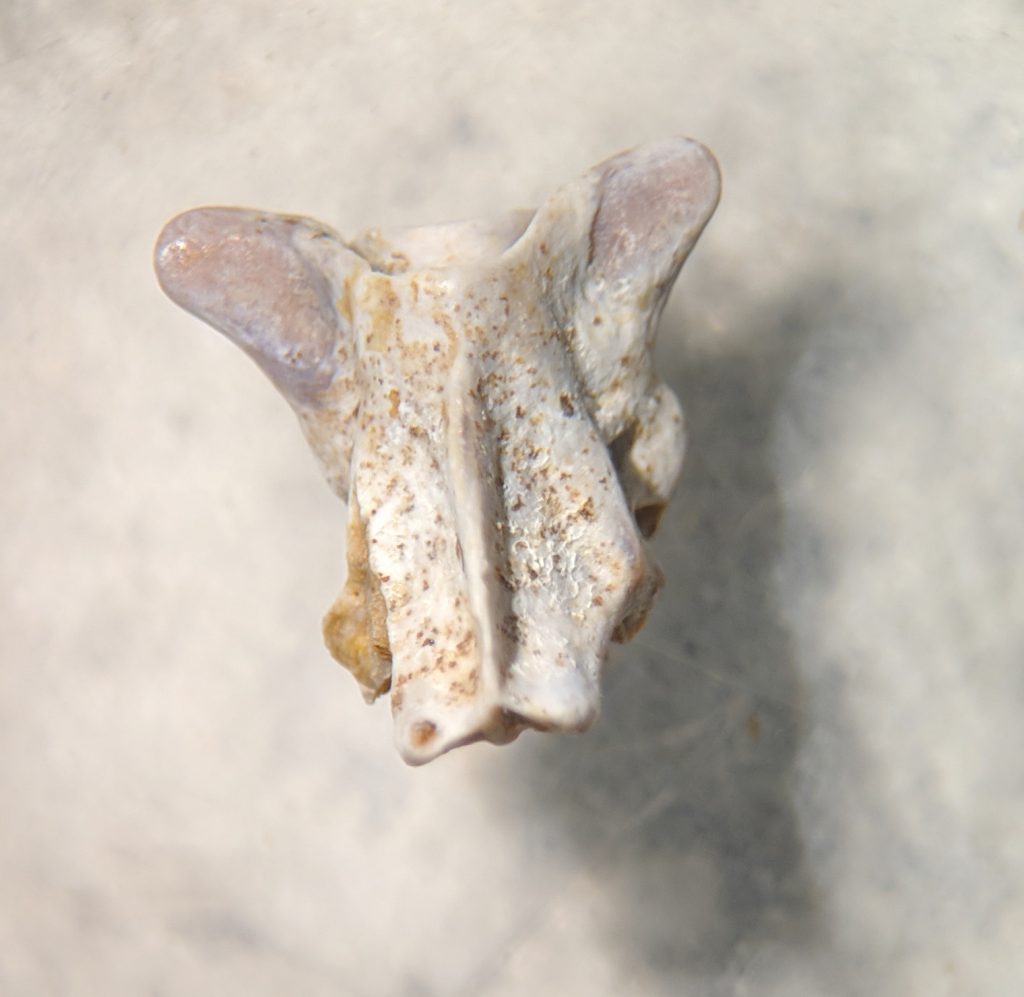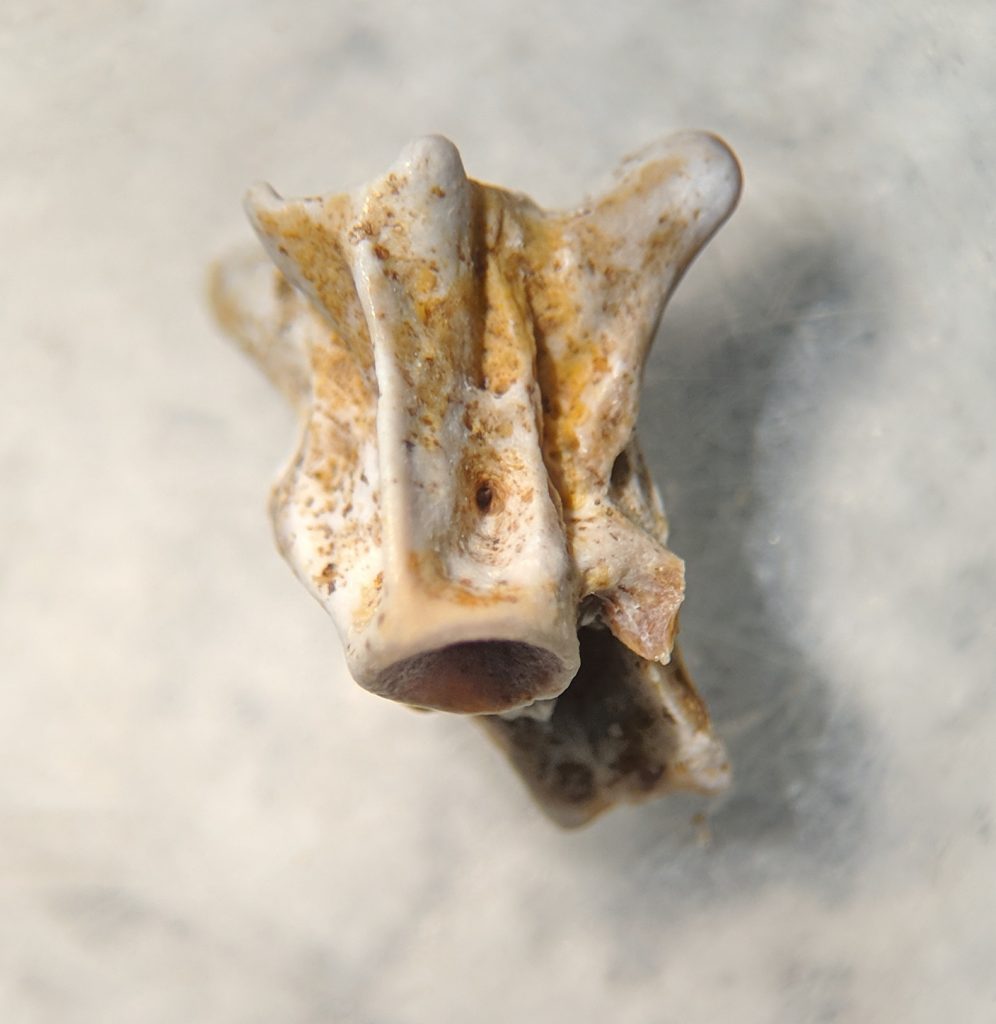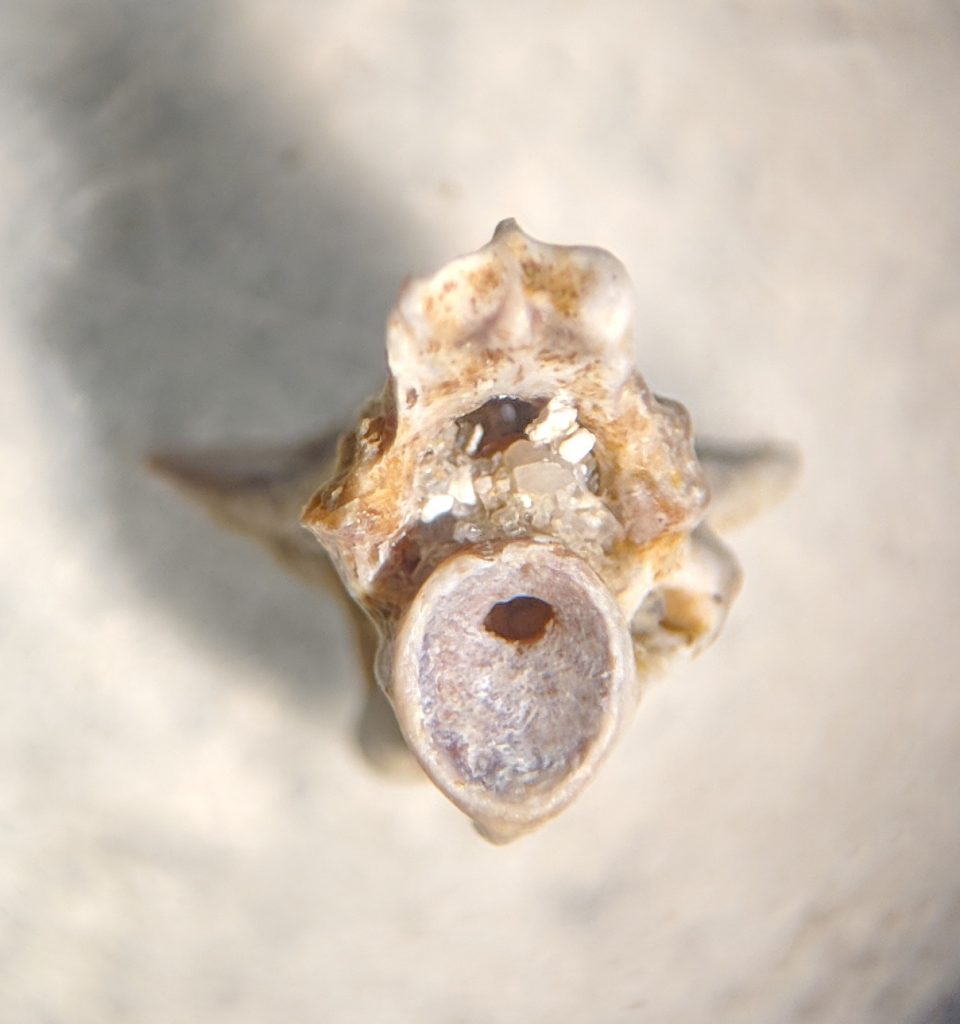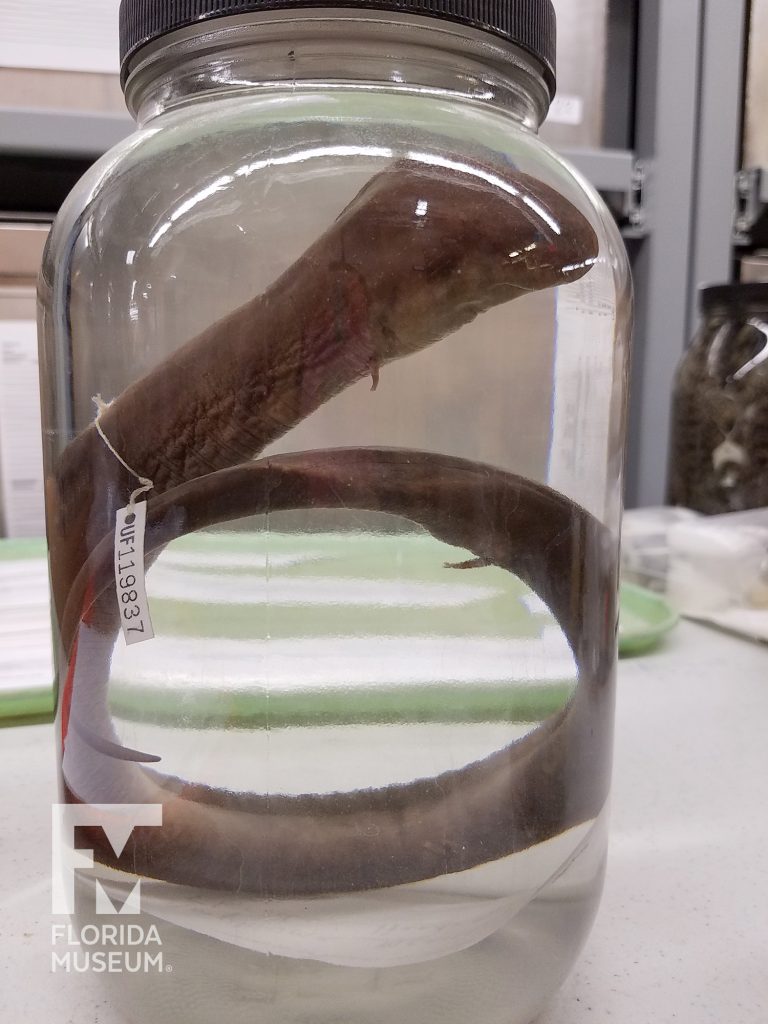We passed a major curation milestone for the Montbrook Site on September 11, 2018, as the 20,000th catalogue number was assigned to a specimen from Montbrook. Specifically, it was UF 433420, which was given to a vertebra from the eel-like salamander Amphiuma. This specimen was collected by long-time volunteer Dean Warner.
Note that while there are now over 20,000 individual catalog numbers assigned to Montbrook specimens, sometimes more than one specimen is assigned to a particular catalogue number. For example, if someone collects eight gar scales from the same grid square on one day, then all eight may be assigned the same catalogue number. So the 20,000 Montbrook catalogue entries actually represent 33,300 specimens. These numbers do not include the invertebrate fossils from the site, mostly crustaceans, that are deposited into a separate collection at the Florida Museum.
As predicted in a former blog post, Montbrook is now the fourth largest vertebrate fossil site from Florida in our collection in terms of number of catalogue entries. It is only topped by Thomas Farm, Leisey Shell Pit 1A, and Love Bone Bed. These are widely regarded as the three most significant sites in the state. Montbrook is quickly gaining on them, and its seems inevitable that it will move into the number two position, behind only Thomas Farm. Tens of thousands of collected Montbrook fossils remain to be catalogued, and, of course, field work at Montbrook will continue, at least for another year and ideally for many more after that.
The table below shows how the 20,000 catalog numbers assigned to Montbrook fossils are distributed between major groups of animals. Turtles are still the largest group, but bony fishes are now a close second, and show the greatest gain between the first 10,000 and the second batch of 10,000. This is thanks to the work of UF undergraduate student Jennifer Hoeflich who is identifying and cataloging the bony fish from Montbrook.
| number of catalog entries | % of 20000 | % of 1st 10000 | net change | |
| turtles | 8,556 | 42.8% | 62.0% | -19.3% |
| bony fish | 7,000 | 35.0% | 19.4% | 15.6% |
| alligator | 1,053 | 5.3% | 7.4% | -2.2% |
| gomphothere | 657 | 3.3% | 4.4% | -1.1% |
| other mammals | 581 | 2.9% | 3.0% | -0.1% |
| sharks and rays | 1,231 | 6.2% | 2.0% | 4.1% |
| snakes | 518 | 2.6% | 0.8% | 1.8% |
| birds | 60 | 0.3% | 0.5% | -0.2% |
| amphibians | 321 | 1.6% | 0.4% | 1.2% |
| other | 23 | 0.1% | 0.0% | 0.1% |
Strong gains between the first and second batches of 10,000 assigned catalogue numbers are also present for snakes, amphibians, and sharks and rays. In large measure this is thanks to our current NSF grant that is supporting curation of small vertebrate fossils from Florida Miocene sites, including Montbrook. While larger shark and cownose ray teeth are large enough to be seen during excavation at the site, it turns out that smaller shark and ray teeth (those less than 5 mm in size) are much more numerous. These are recovered by screenwashing sediment from the site and picking the residue under a low-powered binocular microscope. Each sandbag of Montbrook sediment often contains over a hundred small teeth of sharks and rays; especially common are teeth of the sharpnose shark Rhizoprionodon and members of the stingray family Dasyatidae.
